The Romantic Manifesto: A Philosophy of Literature Read online
Page 4
Art is man’s metaphysical mirror; what a rational man seeks to see in that mirror is a salute; what an irrational man seeks to see is a justification—even if only a justification of his depravity, as a last convulsion of his betrayed self-esteem.
Between these two extremes, there lies the immense continuum of men of mixed premises—whose sense of life holds unresolved, precariously balanced or openly contradictory elements of reason and unreason—and works of art that reflect these mixtures. Since art is the product of philosophy (and mankind’s philosophy is tragically mixed), most of the world’s art, including some of its greatest examples, falls into this category.
The truth or falsehood of a given artist’s philosophy, as such, is not an esthetic matter; it may affect a given viewer’s enjoyment of his work, but it does not negate its esthetic merit. Some sort of philosophical meaning, however, some implicit view of life, is a necessary element of a work of art. The absence of any metaphysical values whatever, i.e., a gray, uncommitted, passively indeterminate sense of life, results in a soul without fuel, motor or voice, and renders a man impotent in the field of art. Bad art is, predominantly, the product of imitation, of secondhand copying, not of creative expression.
Two distinct, but interrelated, elements of a work of art are the crucial means of projecting its sense of life: the subject and the style—what an artist chooses to present and how he presents it.
The subject of an art work expresses a view of man’s existence, while the style expresses a view of man’s consciousness. The subject reveals an artist’s metaphysics, the style reveals his psycho-epistemology.
The choice of subject declares what aspects of existence the artist regards as important—as worthy of being re-created and contemplated. He may choose to present heroic figures, as exponents of man’s nature—or he may choose statistical composites of the average, the undistinguished, the mediocre—or he may choose crawling specimens of depravity. He may present the triumph of heroes, in fact or in spirit (Victor Hugo), or their struggle (Michelangelo), or their defeat (Shakespeare). He may present the folks next door: next door to palaces (Tolstoy), or to drugstores (Sinclair Lewis), or to kitchens (Vermeer), or to sewers (Zola). He may present monsters as objects of moral denunciation (Dostoevsky), or as objects of terror (Goya)—or he may demand sympathy for his monsters, and thus crawl outside the limits of the realm of values, including esthetic ones.
Whatever the case may be, it is the subject (qualified by the theme) that projects an art work’s view of man’s place in the universe.
The theme of an art work is the link uniting its subject and its style. “Style” is a particular, distinctive or characteristic mode of execution. An artist’s style is the product of his own psycho-epistemology—and, by implication, a projection of his view of man’s consciousness, of its efficacy or impotence, of its proper method and level of functioning.
Predominantly (though not exclusively), a man whose normal mental state is a state of full focus, will create and respond to a style of radiant clarity and ruthless precision—a style that projects sharp outlines, cleanliness, purpose, an intransigent commitment to full awareness and clear-cut identity—a level of awareness appropriate to a universe where A is A, where everything is open to man’s consciousness and demands its constant functioning.
A man who is moved by the fog of his feelings and spends most of his time out of focus will create and respond to a style of blurred, “mysterious” murk, where outlines dissolve and entities flow into one another, where words connote anything and denote nothing, where colors float without objects, and objects float without weight—a level of awareness appropriate to a universe where A can be any non-A one chooses, where nothing can be known with certainty and nothing much is demanded of one’s consciousness.
Style is the most complex element of art, the most revealing and, often, the most baffling psychologically. The terrible inner conflicts from which artists suffer as much as (or, perhaps, more than) other men are magnified in their work. As an example: Salvador Dali, whose style projects the luminous clarity of a rational psycho-epistemology, while most (though not all) of his subjects project an irrational and revoltingly evil metaphysics. A similar, but less offensive, conflict may be seen in the paintings of Vermeer, who combines a brilliant clarity of style with the bleak metaphysics of Naturalism. At the other extreme of the stylistic continuum, observe the deliberate blurring and visual distortions of the so-called “painterly” school, from Rembrandt on down—down to the rebellion against consciousness, expressed by a phenomenon such as Cubism which seeks specifically to disintegrate man’s consciousness by painting objects as man does not perceive them (from several perspectives at once).
A writer’s style may project a blend of reason and passionate emotion (Victor Hugo)—or a chaos of floating abstractions, of emotions cut off from reality (Thomas Wolfe)—or the dry, bare, concrete-bound, humor-tinged raucousness of an intelligent reporter (Sinclair Lewis)—or the disciplined, perceptive, lucid, yet muted understatement of a represser (John O’Hara)—or the carefully superficial, over-detailed precision of an amoralist (Flaubert)—or the mannered artificiality of a second-hander (several moderns not worthy of mention).
Style conveys what may be called a “psychoepistemological sense of life,” i.e., an expression of that level of mental functioning on which the artist feels most at home. This is the reason why style is crucially important in art—both to the artist and to the reader or viewer—and why its importance is experienced as a profoundly personal matter. To the artist, it is an expression, to the reader or viewer a confirmation, of his own consciousness—which means: of his efficacy—which means: of his self-esteem (or pseudo-self-esteem).
Now a word of warning about the criteria of esthetic judgment. A sense of life is the source of art, but it is not the sole qualification of an artist or of an esthetician, and it is not a criterion of esthetic judgment. Emotions are not tools of cognition. Esthetics is a branch of philosophy—and just as a philosopher does not approach any other branch of his science with his feelings or emotions as his criterion of judgment, so he cannot do it in the field of esthetics. A sense of life is not sufficient professional equipment. An esthetician—as well as any man who attempts to evaluate art works—must be guided by more than an emotion.
The fact that one agrees or disagrees with an artist’s philosophy is irrelevant to an esthetic appraisal of his work qua art. One does not have to agree with an artist (nor even to enjoy him) in order to evaluate his work. In essence, an objective evaluation requires that one identify the artist’s theme, the abstract meaning of his work (exclusively by identifying the evidence contained in the work and allowing no other, outside considerations), then evaluate the means by which he conveys it—i.e., taking his theme as criterion, evaluate the purely esthetic elements of the work, the technical mastery (or lack of it) with which he projects (or fails to project) his view of life.
(The esthetic principles which apply to all art, regardless of an individual artist’s philosophy, and which must guide an objective evaluation, are outside the scope of this discussion. I will mention only that such principles are defined by the science of esthetics—a task at which modern philosophy has failed dismally.)
Since art is a philosophical composite, it is not a contradiction to say: “This is a great work of art, but I don’t like it,”—provided one defines the exact meaning of that statement: the first part refers to a purely esthetic appraisal, the second to a deeper philosophical level which includes more than esthetic values.
Even in the realm of personal choices, there are many different aspects from which one may enjoy a work of art—other than sense-of-life affinity. One’s sense of life is fully involved only when one feels a profoundly personal emotion about a work of art. But there are many other levels or degrees of liking; the differences are similar to the difference between romantic love and affection or friendship.
For instance: I love the work of Victor H
ugo, in a deeper sense than admiration for his superlative literary genius, and I find many similarities between his sense of life and mine, although I disagree with virtually all of his explicit philosophy—I like Dostoevsky, for his superb mastery of plot structure and for his merciless dissection of the psychology of evil, even though his philosophy and his sense of life are almost diametrically opposed to mine—I like the early novels of Mickey Spillane, for his plot ingenuity and moralistic style, even though his sense of life clashes with mine, and no explicit philosophical element is involved in his work—I cannot stand Tolstoy, and reading him was the most boring literary duty I ever had to perform, his philosophy and his sense of life are not merely mistaken, but evil, and yet, from a purely literary viewpoint, on his own terms, I have to evaluate him as a good writer.
Now, to demonstrate the difference between an intellectual approach and a sense of life, I will restate the preceding paragraph in sense-of-life terms: Hugo gives me the feeling of entering a cathedral—Dostoevsky gives me the feeling of entering a chamber of horrors, but with a powerful guide—Spillane gives me the feeling of hearing a military band in a public park—Tolstoy gives me the feeling of an unsanitary backyard which I do not care to enter.
When one learns to translate the meaning of an art work into objective terms, one discovers that nothing is as potent as art in exposing the essence of a man’s character. An artist reveals his naked soul in his work—and so, gentle reader, do you when you respond to it.
(March 1966)
4. Art and Cognition
A FREQUENT question, which the estheticians have failed to answer, is: What kinds of objects may be properly classified as works of art? What are the valid forms of art—and why these?
An examination of the major branches of art will give a clue to the answer.
Art is a selective re-creation of reality according to an artist’s metaphysical value-judgments. Man’s profound need of art lies in the fact that his cognitive faculty is conceptual, i.e., that he acquires knowledge by means of abstractions, and needs the power to bring his widest metaphysical abstractions into his immediate, perceptual awareness. Art fulfills this need: by means of a selective re-creation, it concretizes man’s fundamental view of himself and of existence. It tells man, in effect, which aspects of his experience are to be regarded as essential, significant, important. In this sense, art teaches man how to use his consciousness. It conditions or stylizes man’s consciousness by conveying to him a certain way of looking at existence.
Bearing this in mind, consider the nature of the major branches of art, and of the specific physical media they employ.
Literature re-creates reality by means of language—Painting, by means of color on a two-dimensional surface—Sculpture, by means of a three-dimensional form made of a solid material. Music employs the sounds produced by the periodic vibrations of a sonorous body, and evokes man’s sense-of-life emotions. Architecture is in a class by itself, because it combines art with a utilitarian purpose and does not re-create reality, but creates a structure for man’s habitation or use, expressing man’s values. (There are also the performing arts, whose medium is the person of the artist; we shall discuss them later.)
Now observe the relation of these arts to man’s cognitive faculty: Literature deals with the field of concepts—Painting, with the field of sight—Sculpture, with the combined fields of sight and touch—Music, with the field of hearing. (Architecture, qua art, is close to sculpture: its field is three-dimensional, i.e., sight and touch, but transposed to a grand spatial scale.)
The development of human cognition starts with the ability to perceive things, i.e., entities. Of man’s five cognitive senses, only two provide him with a direct awareness of entities: sight and touch. The other three senses—hearing, taste and smell—give him an awareness of some of an entity’s attributes (or of the consequences produced by an entity): they tell him that something makes sounds, or something tastes sweet, or something smells fresh; but in order to perceive this something, he needs sight and/or touch.
The concept “entity” is (implicitly) the start of man’s conceptual development and the building-block of his entire conceptual structure. It is by perceiving entities that man perceives the universe. And in order to concretize his view of existence, it is by means of concepts (language) or by means of his entity-perceiving senses (sight and touch) that he has to do it.
Music does not deal with entities, which is the reason why its psycho-epistemological function is different from that of the other arts, as we shall discuss later.
The relation of literature to man’s cognitive faculty is obvious: literature re-creates reality by means of words, i.e., concepts. But in order to re-create reality, it is the sensory-perceptual level of man’s awareness that literature has to convey conceptually: the reality of concrete, individual men and events, of specific sights, sounds, textures, etc.
The so-called visual arts (painting, sculpture, architecture) produce concrete, perceptually available entities and make them convey an abstract, conceptual meaning.
All these arts are conceptual in essence, all are products of and addressed to the conceptual level of man’s consciousness, and they differ only in their means. Literature starts with concepts and integrates them to percepts—painting, sculpture and architecture start with percepts and integrate them to concepts. The ultimate psycho-epistemological function is the same: a process that integrates man’s forms of cognition, unifies his consciousness and clarifies his grasp of reality.
The visual arts do not deal with the sensory field of awareness as such, but with the sensory field as perceived by a conceptual consciousness.
The sensory-perceptual awareness of an adult does not consist of mere sense data (as it did in his infancy), but of automatized integrations that combine sense data with a vast context of conceptual knowledge. The visual arts refine and direct the sensory elements of these integrations. By means of selectivity, of emphasis and omission, these arts lead man’s sight to the conceptual context intended by the artist. They teach man to see more precisely and to find deeper meaning in the field of his vision.
It is a common experience to observe that a particular painting—for example, a still life of apples—makes its subject “more real than it is in reality.” The apples seem brighter and firmer, they seem to possess an almost self-assertive character, a kind of heightened reality which neither their real-life models nor any color photograph can match. Yet if one examines them closely, one sees that no real-life apple ever looked like that. What is it, then, that the artist has done? He has created a visual abstraction.
He has performed the process of concept-formation—of isolating and integrating—but in exclusively visual terms. He has isolated the essential, distinguishing characteristics of apples, and integrated them into a single visual unit. He has brought the conceptual method of functioning to the operations of a single sense organ, the organ of sight.
No one can perceive literally and indiscriminately every accidental, inconsequential detail of every apple he happens to see; everyone perceives and remembers only some aspects, which are not necessarily the essential ones; most people carry in mind a vaguely approximate image of an apple’s appearance. The painting concretizes that image by means of visual essentials, which most men have not focused on or identified, but recognize at once. What they feel, in effect, is: “Yes, that’s how an apple looks to me!” In fact, no apple ever looked that way to them—only to the selectively focused eye of an artist. But, psycho-epistemologically, their sense of heightened reality is not an illusion: it comes from the greater clarity which the artist has given to their mental image. The painting has integrated the sum of their countless random impressions, and thus has brought order to the visual field of their experience.
Apply the same process to the paintings of more complex subjects—of landscapes, of cities, of human figures, of human faces—and you will see the psycho-epistemological power of the art of painting.
/>
The closer an artist comes to a conceptual method of functioning visually, the greater his work. The greatest of all artists, Vermeer, devoted his paintings to a single theme: light itself. The guiding principle of his compositions is: the contextual nature of our perception of light (and of color). The physical objects in a Vermeer canvas are chosen and placed in such a way that their combined interrelationships feature, lead to and make possible the painting’s brightest patches of light, sometimes blindingly bright, in a manner which no one has been able to render before or since.
(Compare the radiant austerity of Vermeer’s work to the silliness of the dots-and-dashes Impressionists who allegedly intended to paint pure light. He raised perception to the conceptual level; they attempted to disintegrate perception into sense data.)
One might wish (and I do) that Vermeer had chosen better subjects to express his theme, but to him, apparently, the subjects were only the means to his end. What his style projects is a concretized image of an immense, nonvisual abstraction: the psycho-epistemology of a rational mind. It projects clarity, discipline, confidence, purpose, power—a universe open to man. When one feels, looking at a Vermeer painting: “This is my view of life,” the feeling involves much more than mere visual perception.
As I have mentioned in “Art and Sense of Life,” all the other elements of painting, such as theme, subject, composition, are involved in projecting an artist’s view of existence, but for this present discussion, style is the most important element: it demonstrates in what manner an art confined to a single sense modality, using exclusively visual means, can express and affect the total of man’s consciousness.

 Anthem
Anthem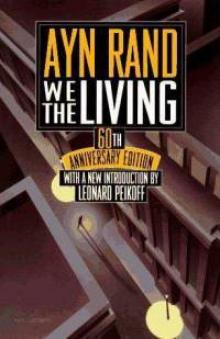 We the Living
We the Living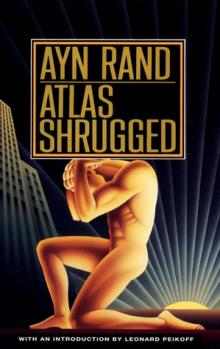 Atlas Shrugged
Atlas Shrugged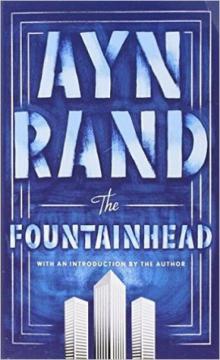 The Fountainhead
The Fountainhead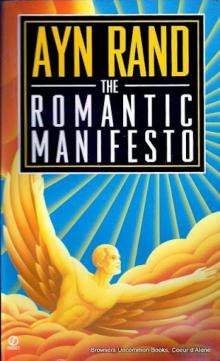 The Romantic Manifesto: A Philosophy of Literature
The Romantic Manifesto: A Philosophy of Literature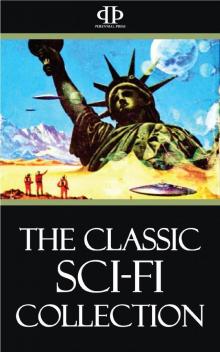 The Classic Sci-Fi Collection
The Classic Sci-Fi Collection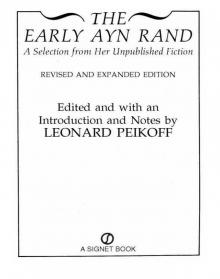 The Early Ayn Rand
The Early Ayn Rand